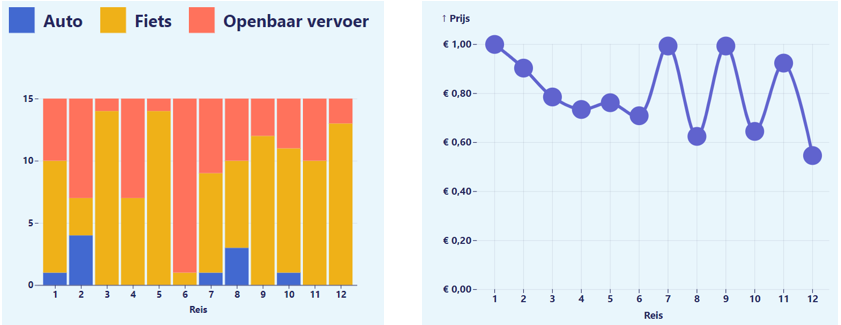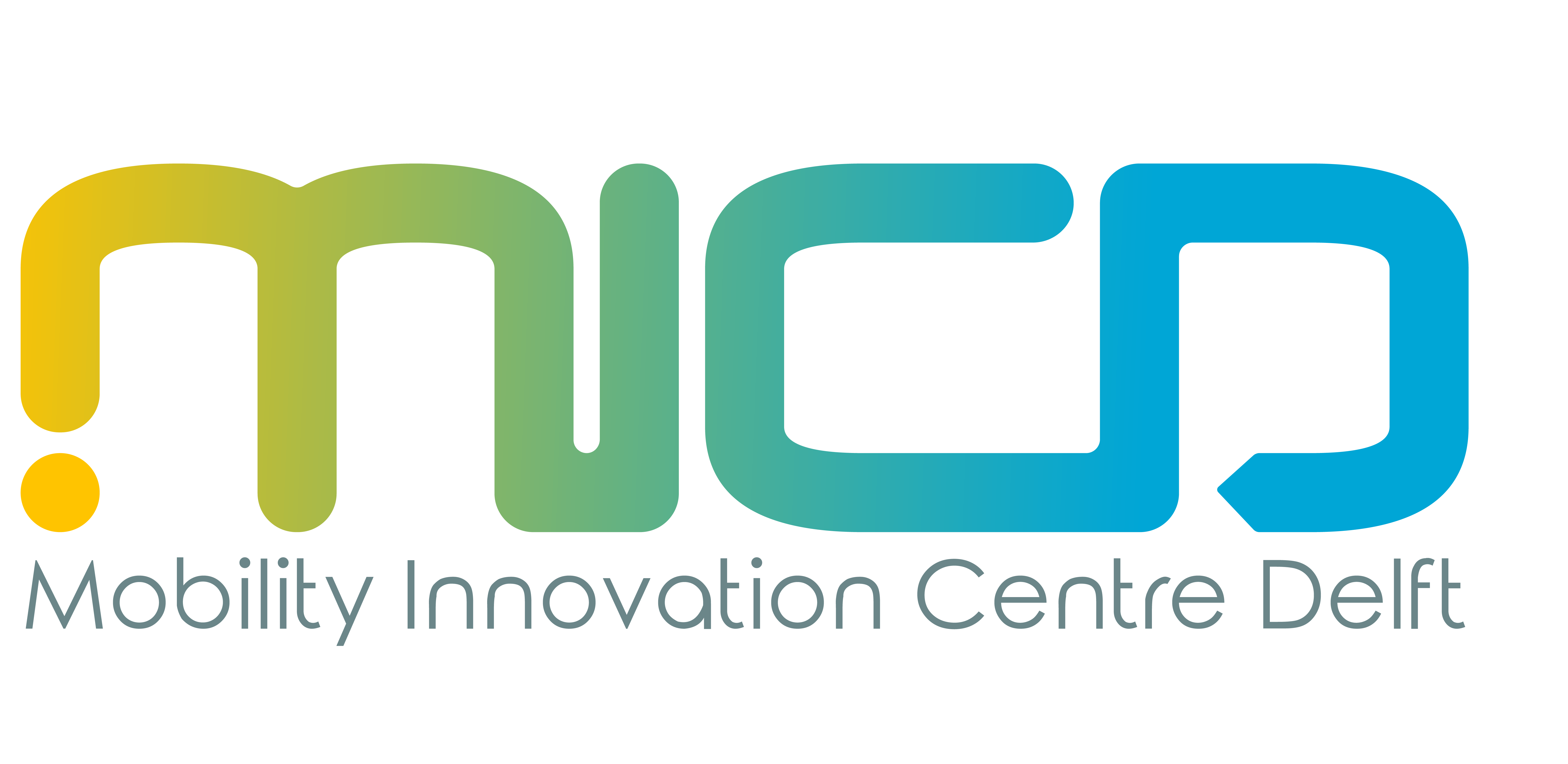Designing the mobility of the future is complex, due to several factors. On the part of the European Union, the urgency to drastically reduce CO2 emissions is high. Furthermore, our cities are getting busier and the diversity in means of transport is increasing. With more sustainable choices and increasing pressure on energy supplies in mind, the question arises: how can we better spread traffic and influence travel choices?
As a scientist in the Transport & Planning Department of the Faculty of Civil Engineering and Geosciences, Nejc Geržinič studies how travellers are making choices. He uses a ‘serious game’: a simulation with a group of people, in which they estimate how they would travel in different situations. Nejc hopes to get a better understanding of travellers’ preferences by varying various factors, such as weather conditions, type of trip, travel time and travel costs. The nature of the trip is also relevant: is it a commute or a leisure trip?
Travel credit
Nejc explains: “The experiment consists of several situations, each varying in one aspect. Every participant receives a travel credit at the start of the simulation: you can use these so-called credits during twelve runs. A car ride costs more than a bike ride, for instance, and the price of public transport lies in between. The time to park your car and store your bike is also included in the simulation. You do have to use your credits tactically: when your allowance runs out, you basically lose the ability to travel. An interesting addition to the simulation is the option to buy and sell credits. The joint buying and selling of credits constantly determines the market value. If the need for credits is high, they automatically become more expensive. Besides participants’ travel choices, the trading of travel credits also provides insights into behaviour”.

First insights
By now, the experiment has been conducted with different groups. The first insights are known, says Nejc: “38% of the participants prefer to choose bicycles in general, 16% prefer to drive a car and 11% opt for public transport. The remaining participants (35%) do not have a strong preference: they determine their choice based on the varying circumstances. It is also notable that those who choose public transport do so from conviction. They are rather ‘insensitive’ to costs, credit balance and exchange rate. We see more fluctuations in the other categories. Furthermore, it has also become clear that the factor ‘weather’ is assessed differently in the Netherlands than in southern European countries.”
In the future, much more data will be collected, in order to truly provide forecast data. In addition to the live experiments, the researchers also acquire valuable information from conversations with participants. For instance, about how they view the system, and why they make certain choices. In complement, an online experiment is being conducted, in which participants have no contact with each other. This generates a different dynamic, as people are not influenced by others in their vicinity.

Applications
This research is part of the Dit4Tram project, which includes the development of smart algorithms for sustainable mobility. In this first draft of the research, basic journeys are provided to understand how people deal with travel rights in different situations. In follow-up research, the experiment should become increasingly realistic. More variables also means more complex methods to make reliable analyses. In addition, there are many other considerations before a system with travel rights can actually be implemented. Think of a privacy-proof system, legal aspects, public opinion and national politics.
